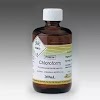IMPROVEMENT OF DISSOLUTION CHARACTERISTICS
OF SLIGHTLY SOLUBLE DRUG BY SOLID DISPERSION TECHNIQUE
AIM:
To improve dissolution characteristics of slightly
soluble drug by solid dispersion technique.
THEORY:
Solid dispersion is one of the methods,
which was most widely and successfully applied to improve the solubility,
dissolution rates and consequently the bioavailability of poorly soluble drugs.
The solid dispersion is based on the concept
that the drug is dispersed in an inert
water-soluble carrier at solid state. When the solid dispersion comes to contact with the aqueous solution, the inert carriers dissolves and the drug is released, the increased surface area produces a higher dissolution rate thus increasing the bioavailability of the poorly soluble drugs. The carriers should be freely water soluble, non-toxic, inert, thermally stable and chemically compatible with drugs. Several water soluble carriers such
as methyl cellulose ,hydroxy ethyl cellulose, hydroxy propyl cellulose, hydroxy propyl methyl cellulose, urea, lactose, dextrose, citric acid, succinic acid polyvinyl pyrrolidone (PVP) and
polyethylene glycols 4000 and 6000 are used as carriers for making solid dispersion.
The term solid dispersion refers to a group of solid products consisting of at
least two different components, generally a hydrophilic matrix and a hydrophobic
drug. The matrix can be either crystalline or amorphous. The drug can be
dispersed molecularly, in amorphous particles (clusters) or in crystalline
particles.
PROCEDURE:
Preparation of PEG 4000-Paracetamol Solid Dispersion:
a)Preparation of physical mixture
The
physical mixture ofParacetamol(800mg)- PEG 4000(1600mg) were prepared in 1:2
ratio by mixing continuously accurately weighed amounts of drugs and carrier
with the help of a spatula in a glass mortar.
b) Preparation by kneading method
The
required amount of Paracetamol(800mg)and carrier(1600g) in 1:2 ratio
were wetted with sufficient volume of methanol and kneaded thoroughly for 30
mins in a glass mortar. The solid dispersion formed was dried under
vacuum for 24 hrs. Dried powder was passed through sieve no. 30 and stored in
self sealing cover in desiccator until further evaluation.
EVALUATION:
Solubility :
1) The pH solubility profile
ofprepared solid dispersion , physical mixture and drug was determined at 37 ±10C
in aqueous media with pH 5.8.
2) Standard buffer solution of pH 5.8
was prepared under standard condition.(water made to buffer solution)
3) Then the pH of the buffer prepared
was found out using pH meter.
4) 60mg of solid dispersion, 60mg of
physical mixture and 20mg of drug (Paracetamol) was taken in 10ml volumetric
flasks and make upto 10ml using 5.8 buffer.
5) Then the volumetric flasks
were placed in orbitary shaker for 1 hr at 370C.
6) After 1hr the solution in the
volumetric flasks were filtered and the filtered solutions of solid dispersion,
physical mixture and the drug were analysed using UV spectrometer.
7) From the absorbance value obtained the
concentration present in the sample can be determined by using standard
calibration curve and compared.
Differential
scanning calorimeter:
Differential scanning calorimetry (DSC) monitors heat
effects associated with phase transitions and chemical reactions as a function
of temperature and is a very informative method in physical characterisation of
a compound. In Differential Scanning Calorimetry, the difference in heat flow
to the reference and
a sample at the same temperature, is recorded as a function of
temperature. The reference is an inert material such as alumina or just an
empty aluminium pan. The temperature of both the sample and reference are
increased at a constant rate.
Procedure:
0.42g of the sample was loaded in
aluminium pans.
Both the reference pan and the sample pan was loaded
into the instrument.
The sample is analysed and thermogram was obtained as per standard
operating procedure.
The thermogramof sample obtained was compared with thermogram of
paracetamol and PEG 4000)
From the comparison compatability studies were made.
REPORT:
Paracetamol drug comes under BCS class 2. Hence
improvement of solubility is needed and chosen for this experiment. From the
article reviews PEG 4000 is mostly used compared to other molecular weight
carriers. Because of the hydrophilic nature of the PEG 4000 it has been chosen
for solid dispersion. From the performed experiment the ratio of drug present
in solid dispersion: physical mixture: drug is 58.7%: 34.6%: 38.45%.From the
solubility profile obtained on comparing solid dispersion, drug and physical
mixture it is evident that solid dispersion was found to be 1.696 folds more
that physical mixture and solid dispersion was found to be 1.52 folds more than
pure drug. Hence the solubility of solid dispersion is comparatively more than
the physical mixture and the drug. In case of differential scanning calorimetry
based on melting point of paracetamol and PEG 4000 we got two peaks in
exothermic reaction region at 169°c and 60°c respectively. So from the peak
obtained there is only physical interaction than any other interaction.
OUTCOME:
1:4 Ratio of Paracetamol and PEG-4000 may be
considered as a suitable ratio for developing the formulation to improve its
solubility profile for achieving bioavailability of Paracetamol.








0 Comments